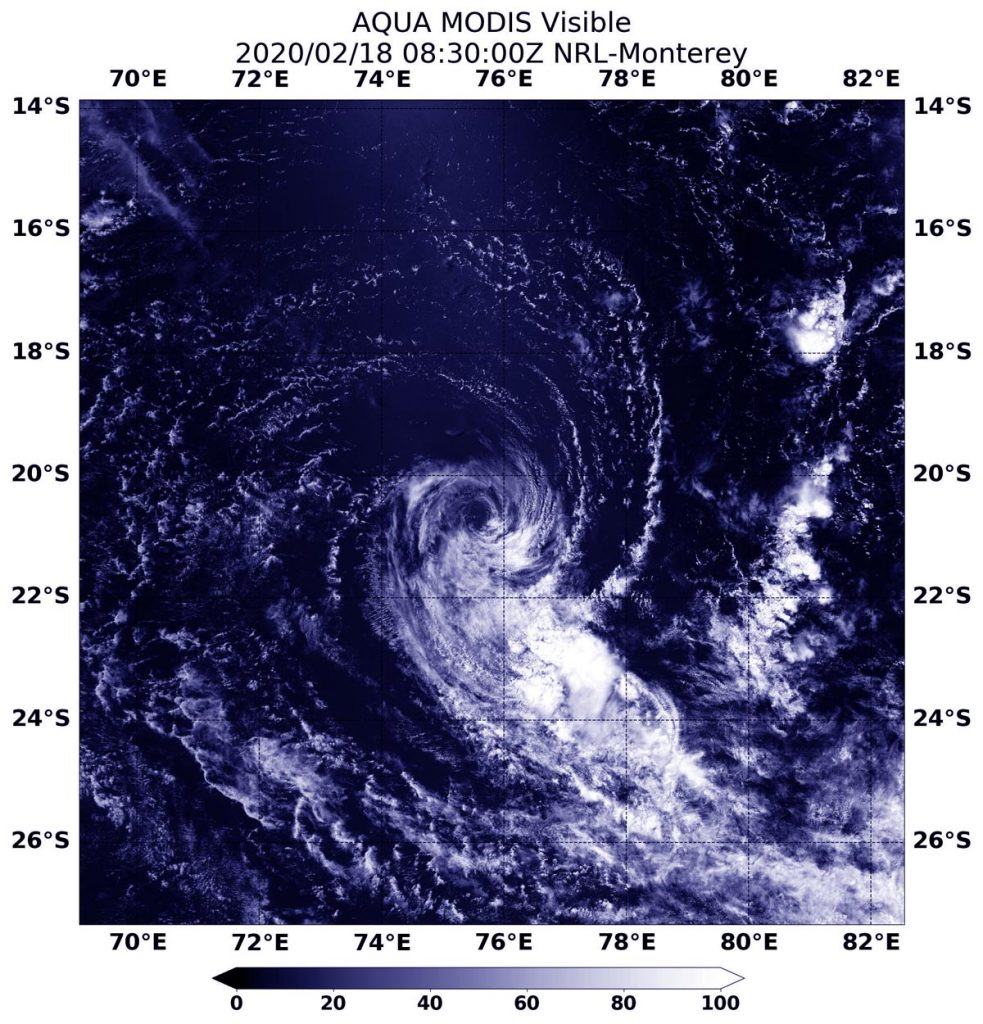Feb. 18, 2020 – NASA Finds Wind Shear Doing in Tropical Storm Gabekile
Winds outside of Tropical Storm Gabekile are ripping the storm apart. NASA’s Aqua satellite provided a visible image of the storm that showed strong northwesterly wind shear was adversely affecting the storm.

Gabekile formed on Feb. 15 and by the next day, it had rapidly intensified to hurricane-force with maximum sustained winds near 75 knots (86 mph/139 kph), then after encountering wind shear the storm quickly weakened.
In general, wind shear is a measure of how the speed and direction of winds change with altitude. Tropical cyclones are like rotating cylinders of winds. Each level needs to be stacked on top each other vertically in order for the storm to maintain strength or intensify. Wind shear occurs when winds at different levels of the atmosphere push against the rotating cylinder of winds, weakening the rotation by pushing it apart at different levels.
When NASA’s Aqua satellite passed over the Southern Indian Ocean, it provided forecasters with a visible image of the tropical depression. On Feb. 18 at 3:30 a.m. EST (830 UTC), the Moderate Resolution Imaging Spectroradiometer or MODIS instrument that flies aboard NASA’s Aqua satellite showed wispy clouds circled around Gabekile’s low-level center and the bulk of clouds and storms were pushed more than 100 nautical miles southeast of the center.
At 10 a.m. EST (1500 UTC), the Joint Typhoon Warning Center (JTWC) issued the final bulletin on Gabekile. Tropical cyclone Gabekile had maximum sustained winds near 30 knots (34.5 mph/55.5 kph), making it a tropical depression. Gabekile was located near latitude 21.0 degrees south and longitude 75.5 degrees east, about 852 nautical miles south of Diego Garcia. Gabekile was moving to the south-southwest and dissipating.
NASA’s Aqua satellite is one in a fleet of NASA satellites that provide data for hurricane research.
Tropical cyclones/hurricanes are the most powerful weather events on Earth. NASA’s expertise in space and scientific exploration contributes to essential services provided to the American people by other federal agencies, such as hurricane weather forecasting.
